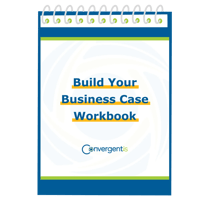It isn't hard to agree that accurate and timely management reporting can, at times, seem impossible. The challenge begins in ensuring that all the correct data has been used to build reports. These reports must then present information that is an accurate reflection of the business' current state. However, meeting deadlines can mean that some data gets left behind. For senior managers, you may not have the time to review all the information sources for each scenario. Reviews take substantial time and effort. It can also be detrimental because in the amount of time it takes you to go back through and create accurate reports, your competitor has likely done one better and acted on the reports' data. The bottom line is your business needs accurate reports to sustain your competitive advantage, but how can you do so in the most efficient way possible?
While most management systems can provide you with the basics, your senior leadership is likely looking for more insightful; actionable data shared at regular intervals. Rather than doing this by hand, it is likely time that your business considers reporting the capabilities of embedded information in SAP S/4HANA for any management reporting. S/4HANA is a useful tool. However, you might run into some hiccups when trying to consolidate SAP and non-SAP data. In situations with an automated process, SAP Analytics Cloud (SAC) comes into play. SAC is a Software as a Service (SaaS) solution that requires a user license to get started but can also be tested with the free trial to explore capabilities such as its ability to create reports on demand.
Create Reports on Demand
Through stories in SAC, you can create just about any report, dashboard, or visualization you need with the metrics that your team requires to make sound financial decisions. To free up valuable time, SAC provides a variety of story layouts. Each template includes placeholders that are already aligned so that you can choose which measures and dimensions you want to have in the report. Here SAC allows users to explore and visualize associated data in charts, tables, and geo maps. That said, geo maps are not magic and will require some effort to set up the right metadata to be shown adequately. You can automatically build a story, add data to it, and have SAP Analytics Cloud develop your story for you. All you need to do is choose the measure you wish to include in your story, and the system will do the rest.
The story can be generated based on a template. SAC gives you the option to use one of their existing templates, which are sufficient for specific functions, although they may be more often used as a reference to create your template. The selected template will include a selection of charts, tables, and data that display the selected measure. Any adjustments can be made in the designer panel, including changing chart types, colour, or adding new objects. Parameters can also be adjusted by accessing builder mode. This gives you an excellent foundation to continue building stories. Once completed, these stories can be shared with other users and teams or compiled into an agenda. These can then be shared with a more extensive user base to spark online discussions or create an event or task.
Automate Your Reports
Within SAC, businesses that currently run SAP S/4HANA can read data live and add additional live connections to ensure all information is up to date. For companies that don't operate SAP S/4HANA, a useful feature of SAC is scheduling automatic data loads. This data will then be reflected in SAP Analytics Cloud Story with the most current data. To schedule an update, you can navigate 'Connection' from the main menu in your model. From there, you will see a list of data sources. You can then select the source by hitting 'Import Now,' which will allow you to see your scheduling options. Perhaps, you want newly updated data for the story prepared and ready to go for Monday morning. Data can be scheduled to update immediately, on a specific date, or at regular intervals. Automatic scheduling will ensure that no data is left unaccounted for, and your business' leadership receives the pertinent information on time.
Additionally, the output of your story on SAC can be distributed to your team as a publication. Publications can be scheduled to be automatically generated from stories to SAC and non-SAC users based on a predefined schedule. This automatic feature is available to any SAP Analytics cloud customer who has a minimum of 25 SAC Licenses. If this sounds like your business, scheduling publications can be a great way to accomplish competitive tasks like sharing specific reports at a particular time. The only caveat is that there is a limit to how many automatic publications can be sent out per hour. However, this caveat is for the best as, after all, data overload is still very much something to watch out for.
While this might not answer all your questions, SAC's story tool can be an excellent SAP hack to reporting information on time, every time. For more information, we encourage you to visit our SAP Analytics Cloud page.
To see the business case, use a free workbook to help you get started.


